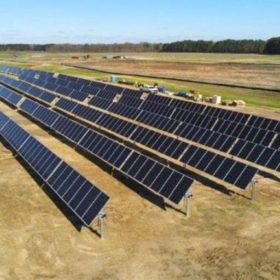Scientists from Canada’s Western University have designed a novel open-source autonomous virtual utility to monitor PV users and enable P2P trading. Their SolarXchange blockchain technology-based system creates smart contracts by itself, facilitating transactions between users on an hourly basis. “We are really interested in working with forward-focused electric utilities that want to enable widespread distributed solar generation and P2P exchanges to make a truly resilient electric grid,” corresponding author Dr. Joshua M. Pearce told pv magazine.
“For utilities that choose to embrace distributed generation there are various business models. One tantalizing approach is to enable P2P trading of solar electricity,” the academics said. “The primary issue is that billing systems have been set up for centralized power production, a new method of billing/ trading is needed that is made for distributed generation. One approach is to use blockchain technology because it allows secure transactions.”
The novel virtual utility is based on two levels of contracts, written using Solidity, one of the popular smart contract languages. In the blockchain context, smart contracts are codes that automatically carry out tasks when certain conditions are met. On the first level, each participating house has a House contract, describing the general state of the user’s PV generation and demand. On the second level, the virtual utility runs the HouseFactory contract, which absorbs information from the first-level contracts, keeping track of the individual homes’ demand and production and deciding when electricity should be exchanged.
“Unit tests for each of the contracts’ methods are written in Solidity, and data on gas usage and costs is collected. It should be noted that the ‘gas’ in the context P2P networks refers to the unit of measurement for transaction fees and computational costs not natural gas,” the group said. “The total cost of deploying the contracts were calculated by migrating the contracts onto the local Truffle blockchain and retrieving the gas usage and cost information from the terminal output.”

Following the testing of the blockchain functions, a JavaScript simulation is developed to use the contracts on actual load and PV generation data for one year on an hourly basis. The simulation considers two scenarios: both include 10 homes and real electricity information from New York City. The first case study, “True Peers,” represents a mature system in the future where all the houses are prosumers with PV of their own.
“The second case study is called the Intermittent Transition. In this case study there are four types of houses,” the scientists explained. “First, one-quarter of the houses have twice the PV they need for self-consumption, representing households with large unshaded rooftop areas. Second, one-quarter have enough PV to match their electric load annually, which would represent the way most rooftop PV systems are designed today to take advantage of net metering rates. Third, one-quarter of the houses have only half the PV necessary to match their load, which would represent houses on a small lot or in a non-optimal. Finally, one-quarter have no PV representing households without available PV surface space because of shading or households without access to capital to install PV.”
The True Peers case study led to 521 kWh of energy exchanges, yielding total annual cost savings of $70.78 under a time of use (ToU) rate structure. In contrast, the Intermittent Transition case study resulted in 11,478 kWh of exchanges, with total net savings of $1,599.24 under the same ToU rate structure.
“Having a greater variability in PV production thus resulted in increases of more than a factor twenty in exchanges and net cost savings,” said the researchers.
“This research aims to show that it is possible to create a gas effective P2P virtual net metering system that is minimal maintenance for users while still saving users money,” the group concluded. “As a result, this system makes owning PV and participating in a P2P network more accessible. Both PV owners and non-PV owners benefit from participating in this system, as seen from the Intermittent Transition case study. Utilities should adopt the role of the virtual utility in the proposed system to centralize the P2P process.”
They presented their system in “Using a ledger to facilitate autonomous peer-to-peer virtual net metering of solar photovoltaic distributed generation,” which was recently published in Solar Energy Advances.
This content is protected by copyright and may not be reused. If you want to cooperate with us and would like to reuse some of our content, please contact: editors@pv-magazine.com.








By submitting this form you agree to pv magazine using your data for the purposes of publishing your comment.
Your personal data will only be disclosed or otherwise transmitted to third parties for the purposes of spam filtering or if this is necessary for technical maintenance of the website. Any other transfer to third parties will not take place unless this is justified on the basis of applicable data protection regulations or if pv magazine is legally obliged to do so.
You may revoke this consent at any time with effect for the future, in which case your personal data will be deleted immediately. Otherwise, your data will be deleted if pv magazine has processed your request or the purpose of data storage is fulfilled.
Further information on data privacy can be found in our Data Protection Policy.